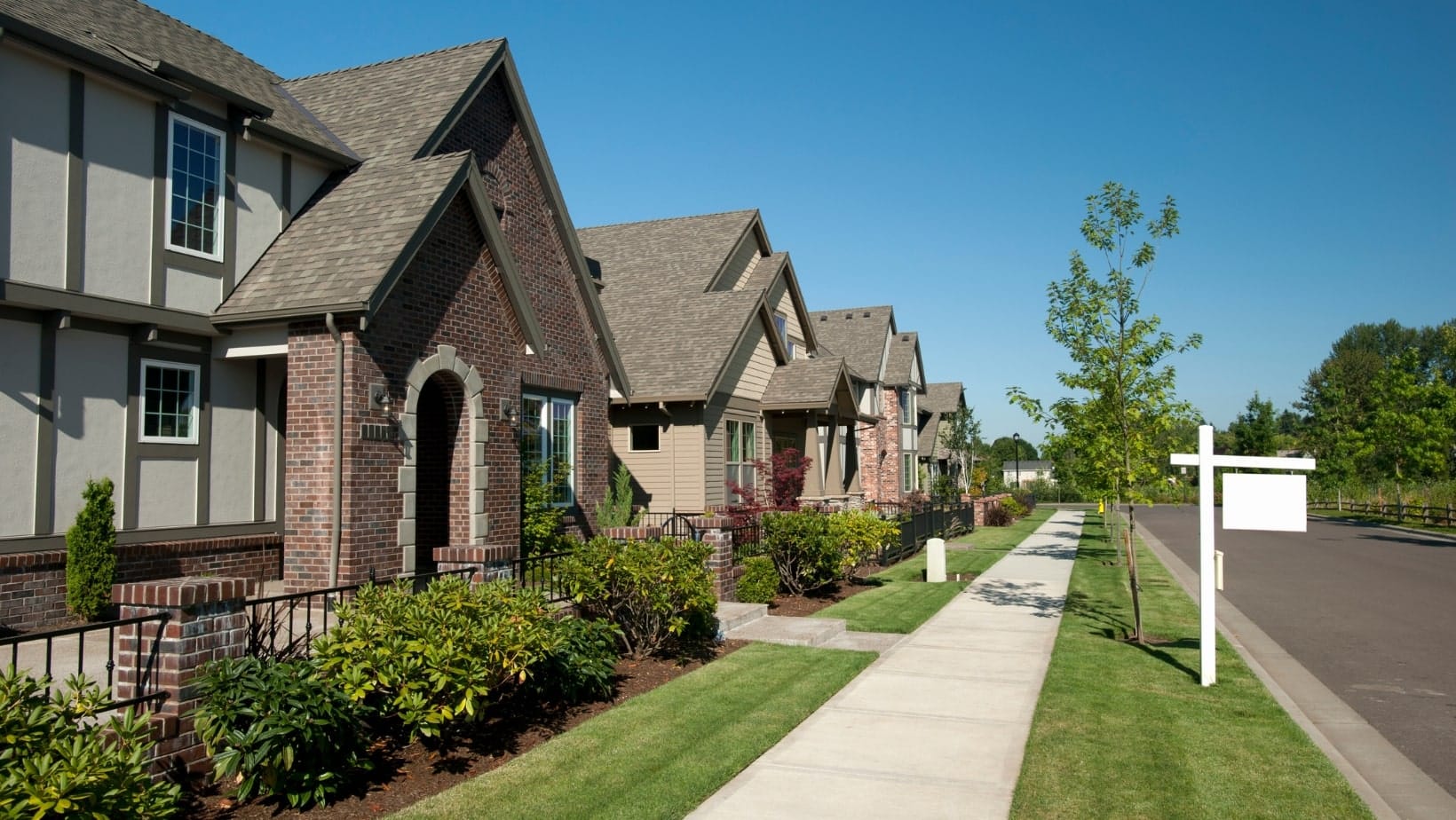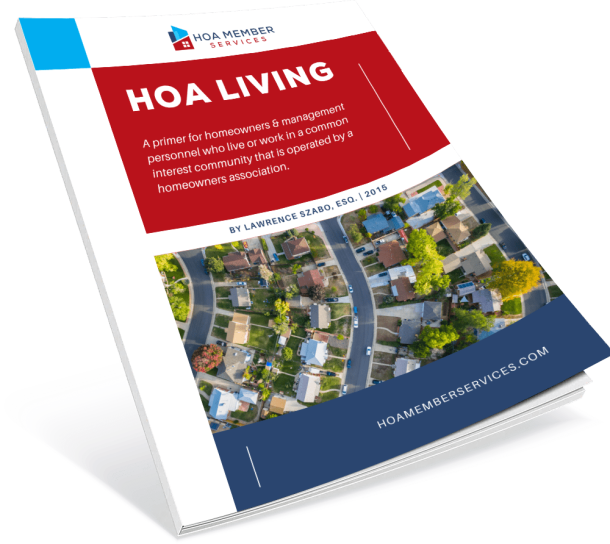Do you ever think navigating HOA rules is confusing, overwhelming, and sometimes downright frustrating? You’re not alone. Many HOA members and homeowners find themselves scratching their heads when it comes to understanding the maze of HOA regulations, especially the difference between Bylaws and Covenants.
But here’s the thing: misunderstanding these terms isn’t just a minor setback — it can lead to disputes, fines, and even legal headaches.
So, what’s the difference? In short, Bylaws govern how an HOA operates, outlining rules for board meetings, elections, and decision-making. Covenants, on the other hand, dictate what homeowners can and can’t do with their property, from landscaping to exterior design.
In this article, we’ll break down HOA bylaws vs. covenants side-by-side, unpack why understanding them is essential, and give you the clarity you need to navigate your HOA like a pro.
Ready to explore? Let’s demystify these terms together!

What Are HOA Bylaws?
HOA bylaws are like the playbook for your homeowners’ association. They’re not about what you can plant in your front yard or whether you can install a backyard pool — those are covered in covenants.
Instead, bylaws focus on how the HOA operates and governs itself. Think of them as the instructions for running the entire organization smoothly and efficiently.
Purpose and Focus of Bylaws
The main purpose of bylaws is to outline the rules and procedures that keep the HOA functioning. They govern critical processes like how board elections are held, the steps for conducting meetings, and the duties and responsibilities of board officers.
Essentially, they create a framework for decision-making, ensuring there’s structure and consistency in how the association operates. Without bylaws, running an HOA would be like trying to organize a meeting without an agenda — chaotic and ineffective.
Key Features of HOA Bylaws
Bylaws are primarily for internal use, meaning they guide board members and HOA leadership rather than directly impacting homeowners’ day-to-day lives.
Here are some of their standout features:
- Operational Guidance: Bylaws dictate essential processes, such as how often the board should meet, how voting is conducted for decisions, and how roles like president, treasurer, and secretary are defined.
- Governance Focus: They establish the structure of the HOA and ensure that decisions are made according to a fair and consistent process.
Examples of HOA Bylaws:
Typical bylaws might specify that the board must meet quarterly, detail how many votes are required to pass a resolution, or outline the exact duties of each officer to avoid overlaps or confusion.
Who Creates and Updates Bylaws?
Drafting HOA bylaws is usually one of the first steps when forming an association. The board or an HOA attorney typically takes the lead in creating these documents, ensuring they comply with state laws and the specific needs of the community.
Once established, bylaws aren’t set in stone — they can be amended to address changing circumstances or improve governance.
However, amending bylaws is a structured process. Most associations require member involvement, often through voting, to approve changes. This ensures that the community has a say in how the HOA evolves over time.
What Are HOA Covenants?
HOA covenants, on the other hand, are the backbone of a well-maintained community, functioning as promises between the homeowners and the homeowners’ association (HOA).
At their core, covenants are rules that govern the external aspects of the community and its properties. When you move into a community with an HOA, you’re agreeing to follow these covenants, which are usually outlined in the Covenants, Conditions, and Restrictions (CC&Rs) document.
Purpose of HOA Covenants
The primary goal of HOA covenants is to balance individual freedom with community-wide standards. These agreements are designed to protect property values, maintain the neighborhood’s visual harmony, and foster a sense of shared responsibility among residents.
Key Features of HOA Covenants
- External Focus: HOA covenants primarily regulate the external appearance and use of properties, ensuring that individual actions don’t detract from the neighborhood’s overall appeal.
- Community Standards: They act as a guide to ensure all residents uphold certain standards that benefit everyone.
- Uniform Application: These rules apply equally to all properties within the HOA to create a fair and consistent environment.
Examples of HOA Covenants
Covenants ensure that everyone enjoys a high-quality living environment by preventing actions that could negatively impact neighbors or the community as a whole. For instance, they might address things like:
- Property upkeep: Homeowners are expected to maintain their yards and homes to a set standard to ensure the community looks its best.
- Aesthetic consistency: Rules about home paint colors, fencing styles, and landscaping help create a uniform and appealing neighborhood.
- Use restrictions: Covenants often include limitations on short-term rentals, noise levels, or commercial activities, ensuring a peaceful, residential atmosphere.
Who Creates and Updates HOA Covenants?
HOA covenants are typically created during the early stages of a community’s development. Developers or builders draft these rules and file them in the Declaration of Covenants, Conditions, and Restrictions (CC&Rs) with the county recorder’s office, making them a binding part of the property records.
Once the community is established, amending these covenants isn’t a unilateral decision made by the HOA board. Instead, any updates require input and approval from the homeowners themselves, often through a voting process.
This ensures that changes reflect the majority’s preferences while maintaining the community’s overall vision.
Legal Weight of Covenants
Covenants are not mere suggestions; they carry real legal authority. They’re attached to your property deed, meaning they stay with the property even if ownership changes.
This legal tie ensures that covenants are enforceable and that all homeowners are equally accountable. If a homeowner violates a covenant, the HOA can impose fines, suspend access to community amenities, or, in extreme cases, take legal action to enforce compliance.
Key Differences Between HOA Bylaws and Covenants

While they might seem interchangeable at first glance, bylaws and covenants play very different roles in shaping how your HOA community is run.
Here’s a closer look at what sets them apart:
1. Scope: Internal vs. External Rules
Bylaws are like the HOA’s rulebook for internal governance. They dictate how the board operates, covering procedures for meetings, elections, and decision-making. It’s all about keeping the board organized and functional.
Covenants, however, apply outwardly to homeowners and their properties. These are the rules that maintain the neighborhood’s appearance and harmony — like limits on fence heights, rules about parking, or landscaping requirements.
2. Enforcement: Who’s Watching Who?
Bylaws are enforced by the on itself. These rules ensure the board stays accountable and sticks to fair processes. If a board member violates a bylaw, the other members are responsible for addressing it.
Covenants, on the other hand, are enforced by the HOA on the community’s homeowners. If someone builds an unapproved shed or skips lawn maintenance, the HOA steps in to enforce the rules laid out in the covenants.
3. Flexibility: How Easy Are They to Change?
Bylaws are relatively easy to amend. If the board or members feel a change is needed, it can typically be done with a board vote or approval during a general meeting.
Covenants are a different story. Since they are tied to the property deeds and often recorded with the county, changing them requires significant homeowner involvement and approval — sometimes even a supermajority vote. This makes covenants less flexible but ensures consistency across the neighborhood.
4. Legal Context: Where the Rules Are Recorded
Covenants carry legal weight because they’re recorded with the county and tied to the properties themselves. When you buy a home, these covenants become part of your legal obligations as a homeowner.
Bylaws, while not recorded with the county, are just as vital to the HOA. They’re the backbone of the HOA’s functionality, guiding how decisions are made and ensuring the board operates efficiently.
Here’s a table to summarize this:
| Bylaws | Covenants | |
| Scope | Internal governance rules for the HOA board. | External rules homeowners must follow. |
| Enforcement | Enforced by the board on itself. | Enforced by the HOA on homeowners. |
| Flexibility | Easier to amend. | More difficult to change; often requires significant member approval. |
| Legal Context | Not recorded but critical for HOA functionality. | Recorded with the county and legally binding on properties. |
Common Misunderstandings Related HOA Bylaws and Covenants
There’s a lot of confusion around HOA bylaws and covenants, and honestly, it’s easy to see why. They both sound official, both involve rules, and both can impact homeowners.
But treating them as the same thing can lead to frustration, fines, or even legal trouble. Let’s clear up some of the most common misconceptions.
Myth 1: Bylaws Apply to Everyone
Many homeowners think HOA bylaws dictate what they can and can’t do. Not true! Bylaws actually exist to guide the HOA board — things like how meetings are run, voting procedures, and board member responsibilities.
Homeowners aren’t bound by bylaws in the same way they are by covenants.
Myth 2: Covenants Are Just Suggestions
Some people assume that HOA covenants (or CC&Rs — Covenants, Conditions, and Restrictions) are more like friendly guidelines. The reality? They are legally binding. Ignoring them can lead to fines, forced compliance, or even legal action.
If your HOA says no bright purple houses, you could be facing more than just your neighbors’ disapproval if you paint yours.
Myth 3: They’re the Same Thing
This is one of the biggest sources of conflict in HOAs. Bylaws and covenants serve completely different purposes — bylaws govern how the HOA operates, while covenants dictate what homeowners can and cannot do.
Mixing them up can cause unnecessary disputes between residents and the board, often over things that could be easily resolved with a better understanding of the rules.
Why Homeowners Should Care About Both
Living in an HOA community comes with perks — well-kept common areas, property value protection, and a sense of order. But that only works when homeowners understand and follow both covenants and bylaws.
Ignoring them can lead to legal headaches or a poorly managed community. Here’s why paying attention to both is essential:
Impacts on Day-to-Day Life
Covenants keep the neighborhood looking and feeling cohesive. They dictate everything from what color you can paint your house to whether you can park an RV in your driveway. These rules protect property values and ensure that no one neighbor’s choices negatively affect the whole community.
On the other hand, bylaws focus on the behind-the-scenes operations of the HOA. They outline how the board functions, how decisions are made, and how finances are managed. Without clear and enforced bylaws, an HOA can become disorganized, leading to poor leadership and community-wide frustration.
Potential Risks of Ignorance
Not knowing the rules doesn’t excuse you from the consequences. Violating a covenant could result in anything from warning letters to hefty fines — or even a lawsuit if the issue escalates. Imagine spending thousands on a new fence only to be told you have to take it down because it violates a covenant.
Likewise, neglecting bylaws can lead to an HOA board that lacks structure and accountability. If meetings aren’t run properly, financial decisions aren’t transparent, or board members aren’t held to their duties, the whole community suffers.
Tips for Staying Informed
So how do you avoid these pitfalls? First, make it a habit to review your HOA’s governing documents, especially before making any major changes to your home.
Attend HOA meetings — not just when there’s a problem, so you understand how decisions are made. And if something seems unclear, ask questions. The more informed you are, the fewer surprises you’ll face.
At the end of the day, covenants and bylaws aren’t just rules; they’re the foundation of a well-run, harmonious community. By understanding and respecting both, homeowners help ensure their neighborhood remains a great place to live.
What Happens When There’s Conflict?
Living in an HOA community comes with a set of rules designed to keep things running smoothly — but what happens when there’s a dispute?
Whether it’s a disagreement over the bylaws or a battle over the covenants, conflicts can get complicated, and knowing how these disputes typically unfold can help homeowners navigate them more effectively.
Here’s what typically happens when tensions rise and how they’re resolved.
Disputes Over Bylaws
Bylaws govern how the HOA operates, covering things like board elections, meeting procedures, and rule enforcement. But what if there’s confusion or disagreement over these internal rules?
Consider this scenario: A homeowner challenges a recent board decision, arguing that the vote was invalid because proper procedures weren’t followed. Maybe the board held a vote without notifying all members, or a rule change was enforced without the required majority approval.
These kinds of disputes often arise when bylaws are vague or misinterpreted.
When disagreements over bylaws surface, resolution options include:
- Mediation: An impartial third party can help both sides come to an agreement without the need for legal action. Many HOAs offer this as a first step.
- Legal Review: If the bylaws are unclear, consulting an attorney can determine whether the HOA followed its own rules and whether the dispute has legal standing.
- Amendments: If the bylaws are outdated or too ambiguous, the board and homeowners may need to vote on revisions to prevent similar issues in the future.
Bylaws disputes are often administrative, but if left unresolved, they can create tension between homeowners and the HOA board, making clear communication essential.
Disputes Over Covenants
Covenants, Conditions, and Restrictions (CC&Rs) regulate what homeowners can and can’t do with their properties. Since they directly affect homeowners’ daily lives — dictating things like paint colors, landscaping, and exterior modifications — conflicts over these rules can become heated.
Imagine a homeowner receives a violation notice for installing a front-yard fence that doesn’t match community guidelines. They argue that other homes have similar fences and claim the rule is being unfairly enforced.
In another case, a homeowner might fight a landscaping restriction, insisting that their drought-resistant plants are more environmentally friendly than the HOA’s mandated grass lawns.
Because covenants are legally binding, the HOA has the authority to enforce them. If a homeowner refuses to comply, the HOA may:
- Issue Fines: Many HOAs use escalating fines as a deterrent for ongoing violations.
- Send Legal Warnings: A formal letter from an attorney can push homeowners to comply.
- Pursue Legal Action: In extreme cases, the HOA may file a lawsuit or place a lien on the property for unpaid fines, which can lead to foreclosure if left unresolved.
If a homeowner believes they’re being treated unfairly, they may need to challenge the covenant in court, seek an exemption, or negotiate with the HOA to amend the rule. Legal intervention is typically a last resort, but in some cases, it’s necessary to protect homeowners’ rights.

Your Rights and Responsibilities
Disagreements with an HOA can be stressful, but handling them constructively is crucial. Here’s how homeowners can approach conflicts effectively:
- Know the Rules: Understanding your HOA’s governing documents can prevent misunderstandings before they escalate.
- Communicate Professionally: Whether disputing a fine or challenging a rule, keeping conversations respectful and well-documented helps in reaching a fair resolution.
- Seek Mediation Before Legal Action: Many conflicts can be resolved without lawyers if both sides are willing to negotiate.
Amending Bylaws and Covenants — What’s the Difference?
When it comes to making changes in your HOA, amending bylaws and covenants are two very different things. While both govern how the community operates, their purpose, amendment process, and difficulty level are very different.
This distinction means that amending bylaws is generally a simpler, more board-driven process, whereas changing covenants requires extensive homeowner involvement and legal filings.
1. Amending Bylaws
Bylaws exist to help the HOA itself function smoothly, so updating them tends to be a more straightforward process compared to covenants. That being said, there are still specific steps and legal considerations to follow.
Process:
Amending bylaws usually requires a majority vote from the board of directors or, in some cases, approval from the general membership. The exact requirements depend on the existing bylaws, as they typically outline the amendment procedure.
Steps to Amend Bylaws:
- Draft the proposed changes: The board identifies areas that need updates, whether to modernize outdated rules, improve clarity, or align with new laws.
- Notify members: Depending on the bylaws, members may need to be informed of proposed amendments ahead of a vote, giving them time to review and provide input.
- Hold a vote during a meeting: The board or general membership votes on the amendments. If the required majority approves, the changes take effect.
Important Considerations:
- Ensure amendments comply with state laws.
- Confirm that bylaw changes do not contradict the CC&Rs, as covenants hold more legal weight.
- Clearly communicate changes to the community to avoid confusion or resistance.
Amending bylaws is often necessary to reflect the evolving needs of the HOA, but since bylaws only govern administrative procedures, the process is relatively manageable.
2. Amending Covenants (CC&Rs)
Covenants (or CC&Rs) are legally binding restrictions that impact property use and homeowner responsibilities. Because these rules affect all residents and can significantly influence property values, changing them is far more complex than amending bylaws.
Process:
Amending covenants is a formal and often challenging process that typically requires approval from a substantial percentage of homeowners. Many HOAs require a supermajority — often 67% or more — to approve covenant amendments.
This high threshold ensures that major community changes have broad support.
Steps to Amend Covenants:
- Draft the amendment with legal guidance: Since covenants are legal documents recorded with the county, working with an attorney is essential to ensure compliance with state laws and prevent future disputes.
- Notify all homeowners: Residents must receive formal notice of proposed changes and be given time to review and ask questions.
- Hold a formal vote: Unlike bylaw amendments, which often require only board approval, covenant changes require homeowner participation. The vote must meet the quorum and obtain the necessary percentage of approval.
- Record the amended document with the county: Once approved, amendments must be officially recorded to become legally enforceable.
Challenges of Amending Covenants:
- Securing enough votes: Since a significant majority is needed, getting homeowners to participate and agree can be difficult, particularly in larger communities.
- Legal complexity: Unlike bylaws, covenants are legally binding property restrictions, so even minor mistakes in wording or procedure can lead to legal challenges.
- Potential homeowner resistance: Changing long-standing rules, such as restrictions on short-term rentals or exterior modifications, can spark debate and division within the community.
When Should Amendments Be Considered?
Not every issue requires amending HOA rules, but in certain cases, changes are necessary to keep the community running effectively.
Common Reasons to Amend Bylaws:
- Modernizing outdated procedures, such as voting methods or board member qualifications.
- Clarifying ambiguous language that has caused confusion or disputes.
- Ensuring consistency with state laws or new HOA regulations.
Common Reasons to Amend Covenants:
- Adapting to evolving community needs, such as allowing solar panels or electric vehicle charging stations.
- Addressing homeowner concerns, such as limiting short-term rentals or revising pet restrictions.
- Correcting outdated or unclear rules that no longer serve the community’s best interests.
Why Legal Assistance is Essential
While some bylaw amendments may be handled internally, amending covenants almost always requires legal expertise. HOA attorneys help:
- Ensure amendments comply with state and local laws.
- Draft precise language to prevent loopholes or misinterpretation.
- Guide the board through the approval and recording process to avoid costly mistakes.
Skipping legal guidance can lead to unenforceable amendments or even lawsuits from homeowners challenging the changes. While hiring an attorney adds to the cost, it often saves time, money, and stress in the long run.

Practical Advice for Homeowners and HOA Members
Navigating your HOA’s rules doesn’t have to feel like reading legal jargon. Whether you’re a new homeowner or a longtime resident, staying informed and asking the right questions can save you from unexpected fines and frustrations.
Here’s how to proactively avoid unnecessary headaches and enjoy a smooth experience in your HOA community:
- How to Find Your HOA’s Bylaws and Covenants: These documents are usually stored with your HOA board, property management company, or even filed with your county records office. If you don’t have a copy, don’t panic—just submit a written request to your HOA or check your community’s online portal.
- Questions to Ask About HOA Documents: Knowing the basics isn’t enough — dig a little deeper. Ask how often bylaws are updated, especially if you’re considering a home improvement project. Also, get clarity on how covenant enforcement works so you don’t get caught off guard by surprise violations.
- When to Get Help: If you’re facing fines, enforcement disputes, or legal threats, it might be time to consult a professional. A real estate attorney or HOA expert can help you navigate tricky situations and ensure your rights are protected.

Frequently Asked Questions (FAQs)
- Are Covenants and CC&Rs the same thing?
Yes, in most cases, “covenants” is just a shorter way of referring to CC&Rs, which stands for Covenants, Conditions, and Restrictions. These are the official rules that dictate what homeowners can and cannot do with their properties. They often cover things like property maintenance, exterior modifications, and use restrictions.
- Do bylaws supersede covenants?
No, covenants typically take priority over bylaws. The main difference is that covenants dictate property-related restrictions, while bylaws govern how the HOA operates — things like board elections, meeting procedures, and voting rights. Because covenants are recorded with the property deed and tied to real estate law, they generally hold more weight. If there’s a conflict between the two, the covenants usually prevail.
- Are HOA bylaws legally binding?
Yes, HOA bylaws are legally binding, but in a different way than covenants. While covenants regulate what homeowners can and can’t do with their properties, bylaws set the rules for how the HOA itself is managed. This includes board structure, voting procedures, and membership requirements. Even though bylaws don’t control property use, they are enforceable within the HOA, and violating them can lead to fines or legal action.
- Can homeowners change covenants or bylaws?
Yes, but it requires effort. Changing covenants is more challenging because they are recorded with the county and often require a large percentage of homeowners to vote in favor of an amendment — sometimes even a supermajority (such as 67% or 75%). In contrast, bylaws are easier to amend since they mainly affect the HOA’s internal operations. Usually, bylaw changes only require approval from the board or a simple majority vote from members.
- Are HOAs required to enforce covenants?
Yes, HOAs have a responsibility to enforce covenants fairly and consistently. If they fail to do so, homeowners might have grounds to challenge them legally. However, enforcement can vary — some HOAs take a strict approach, while others may be more lenient. If you believe your HOA isn’t enforcing covenants properly, you may have options, such as petitioning the board or seeking legal advice.
HOA Bylaws Vs Covenants: Final Thoughts
When it comes to HOA living, knowing the difference between bylaws and covenants isn’t just a formality — it’s key to keeping the peace. Covenants lay down the big-picture rules that shape the community, while bylaws dictate how the HOA operates behind the scenes.
Both are crucial for maintaining order, protecting property values, and ensuring a smooth-running neighborhood. Understanding these distinctions can save you from headaches and help foster a cooperative, well-managed community.
So, stay informed, stay involved, and don’t hesitate to seek expert guidance when needed.
Want to know more? Check out our free resources for expert insights, practical tips, and guidance on HOA living. And for direct support from an HOA attorney, explore our membership plans — because when it comes to HOA rules, knowledge is power!

